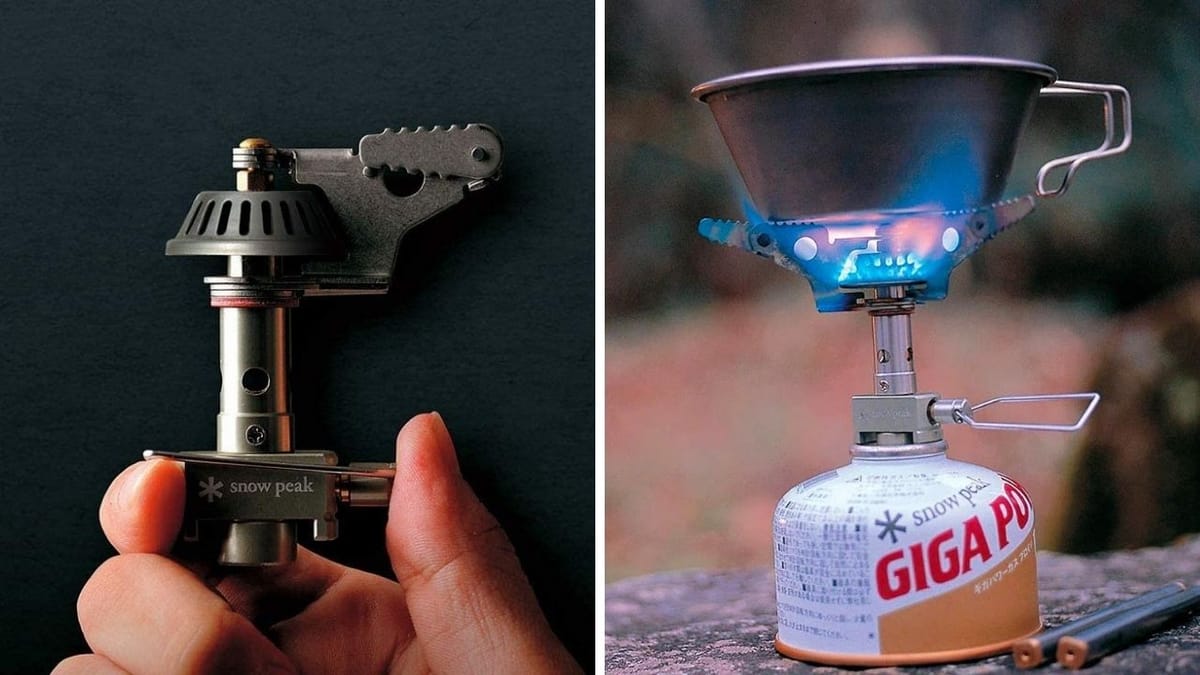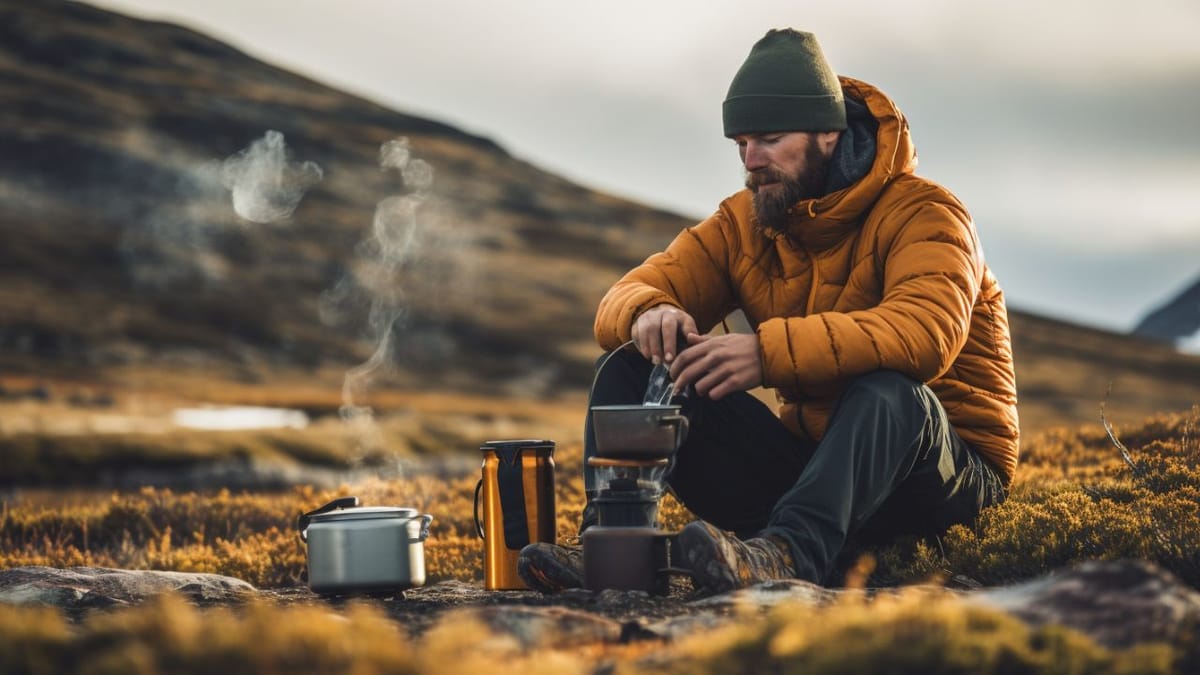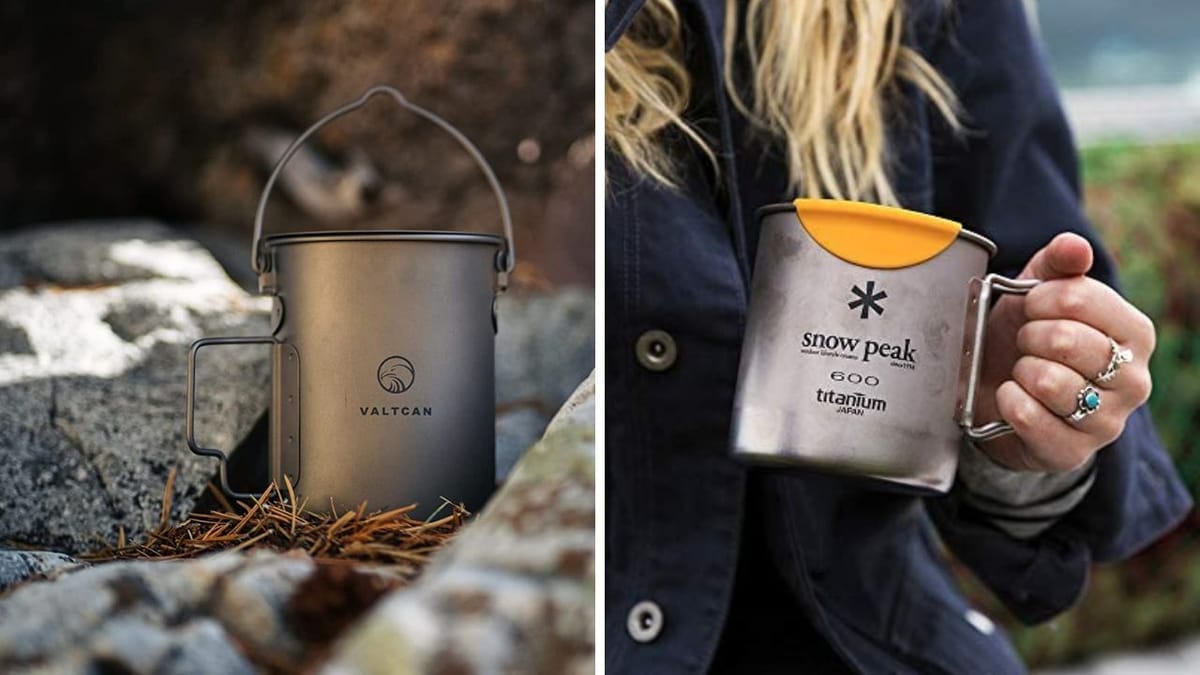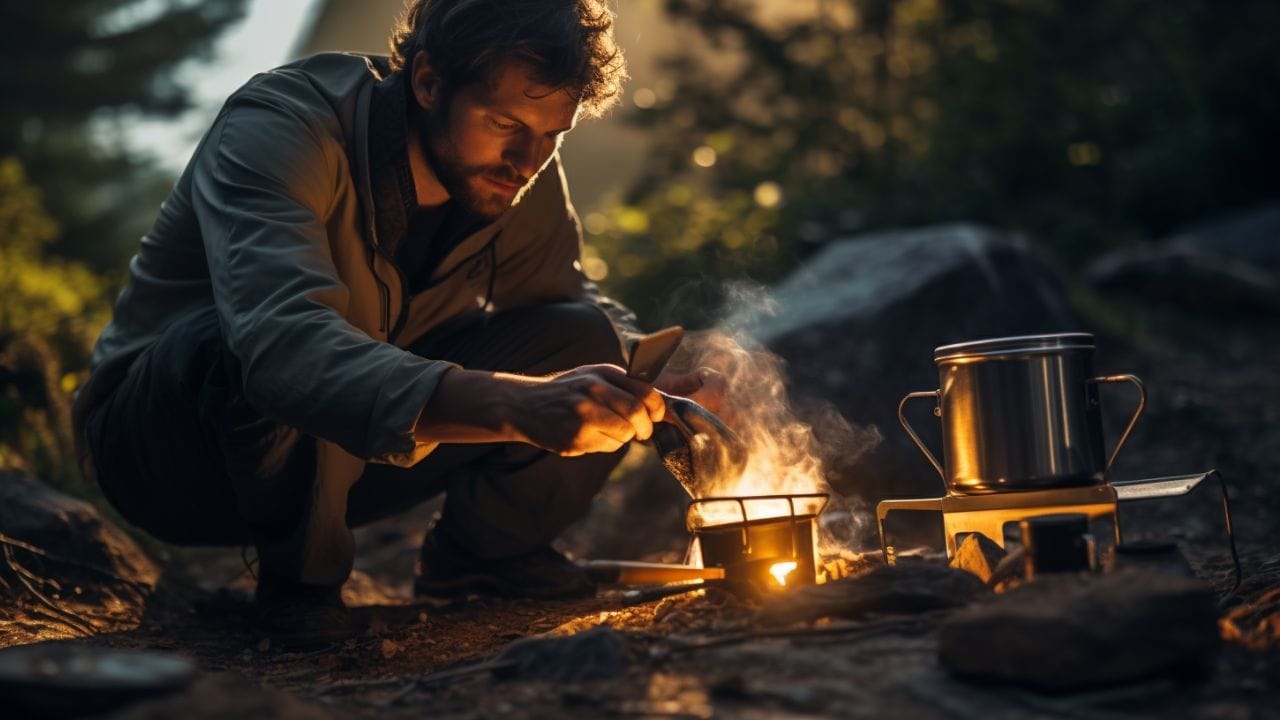
Alcohol Stoves Backpacking: Ultimate Hack for Light Packers!
Discover the lightweight ease of alcohol stoves for backpacking. Explore our guide for efficient, eco-friendly outdoor cooking solutions.
Are you gearing up for your next outdoor adventure and wrestling with the decision of which stove to pack?
Well, you've stumbled upon the right place.
Let's dive into the world of backpacking stoves, focusing particularly on one of the most intriguing options out there: alcohol stoves.
Backpacking stoves are more than just a means to cook your meals; they're your ticket to a warm cup of coffee on a chilly morning and your tool for a hot, nourishing meal after a long day's trek.
Choosing the right stove isn't just about preference; it's about practicality, safety, and the environment you'll be exploring.
In the backpacking world, alcohol stoves have carved out a niche for themselves. They're often lauded for their simplicity, lightweight design, and the ease of finding fuel.
But what exactly makes them tick, and how do they stack up against other types of stoves?
Let's light the flame on this conversation and find out.
Disclosure: We only recommend things we’ve personally used or come highly recommended by trusted peers. Using one of our referral links might give us a small commission which helps support this website at no additional cost to you. If you’d like to learn more check out our disclaimer page.
Understanding Alcohol Stoves for Backpacking
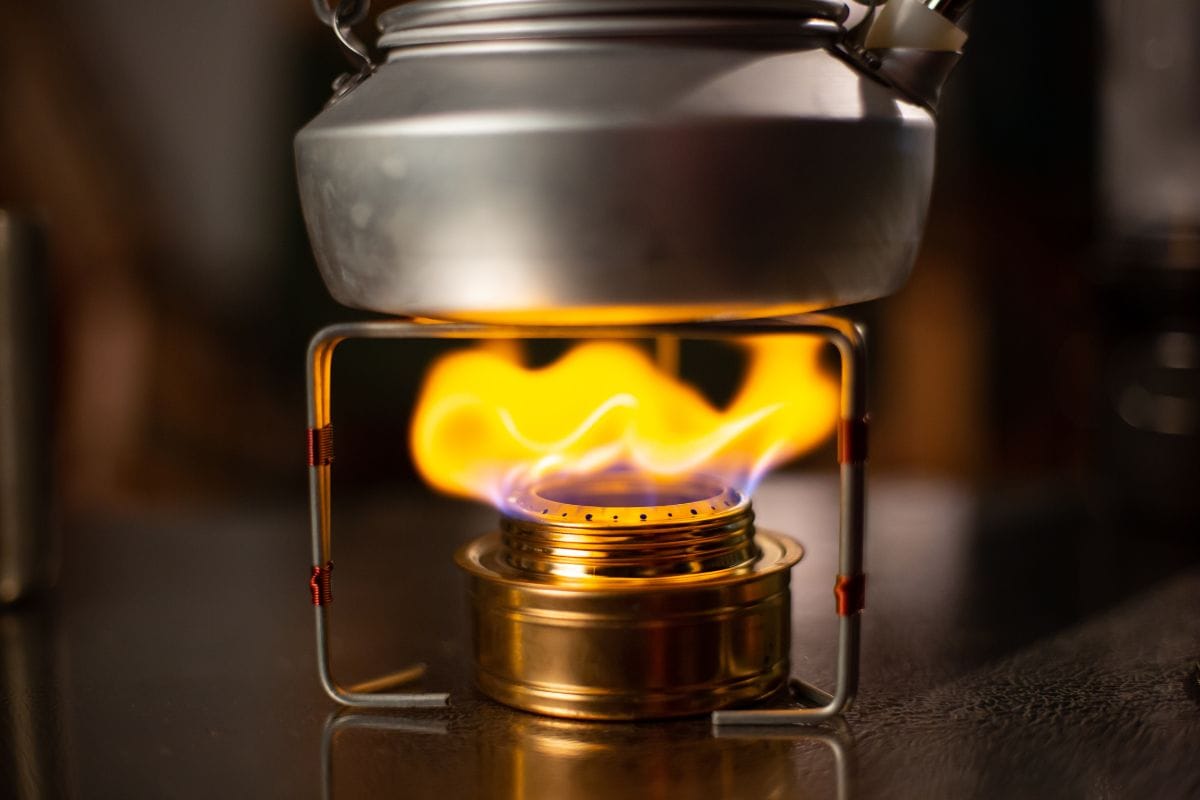
What Are Alcohol Stoves, and How Do They Work?
Imagine a stove that’s lightweight, uncomplicated, and can be fired up with fuel you can find almost anywhere.
That’s an alcohol stove for you.
The mechanics are straightforward: alcohol stoves work by vaporizing the liquid fuel and burning the vapors. When you light them, the heat causes the alcohol inside to vaporize, and these vapors escape through small openings or jets, where they ignite to create a steady flame.
The Types of Alcohol Used
- Denatured Alcohol: This is the most common fuel for alcohol stoves. It’s ethanol that has additives to make it poisonous and undrinkable. It's efficient and burns cleanly, making it a favorite among backpackers.
- Isopropyl Alcohol: Less efficient than denatured alcohol, isopropyl alcohol (rubbing alcohol) can be used in a pinch. However, it doesn't burn as cleanly and produces more soot.
- HEET: Marketed as gas line antifreeze, this product is actually methanol. It's an affordable option, commonly available at Walmart and auto parts stores, particularly during the winter season.
Why Choose an Alcohol Stove?
- Weight and Space Saving: These stoves are champions of lightweight packing. Some weigh as little as an ounce and can be as simple as a repurposed soda can.
- Simplicity: With fewer parts, there's less that can go wrong. No valves, no hoses, no complex maintenance.
- Fuel Availability: You can find alcohol fuel in most hardware stores, gas stations, or even in outdoor stores.
Popular Designs
- Homemade Alcohol Stove: Ever heard of a DIY stove made from a cat food can? It's a popular design among ultralight backpackers. A few simple modifications, and voilà, you have a functioning alcohol stove.
- Commercial Stoves: Brands like Trangia and White Box offer more sophisticated designs with better fuel efficiency and durability.
Alcohol Stoves vs. Canister Stoves
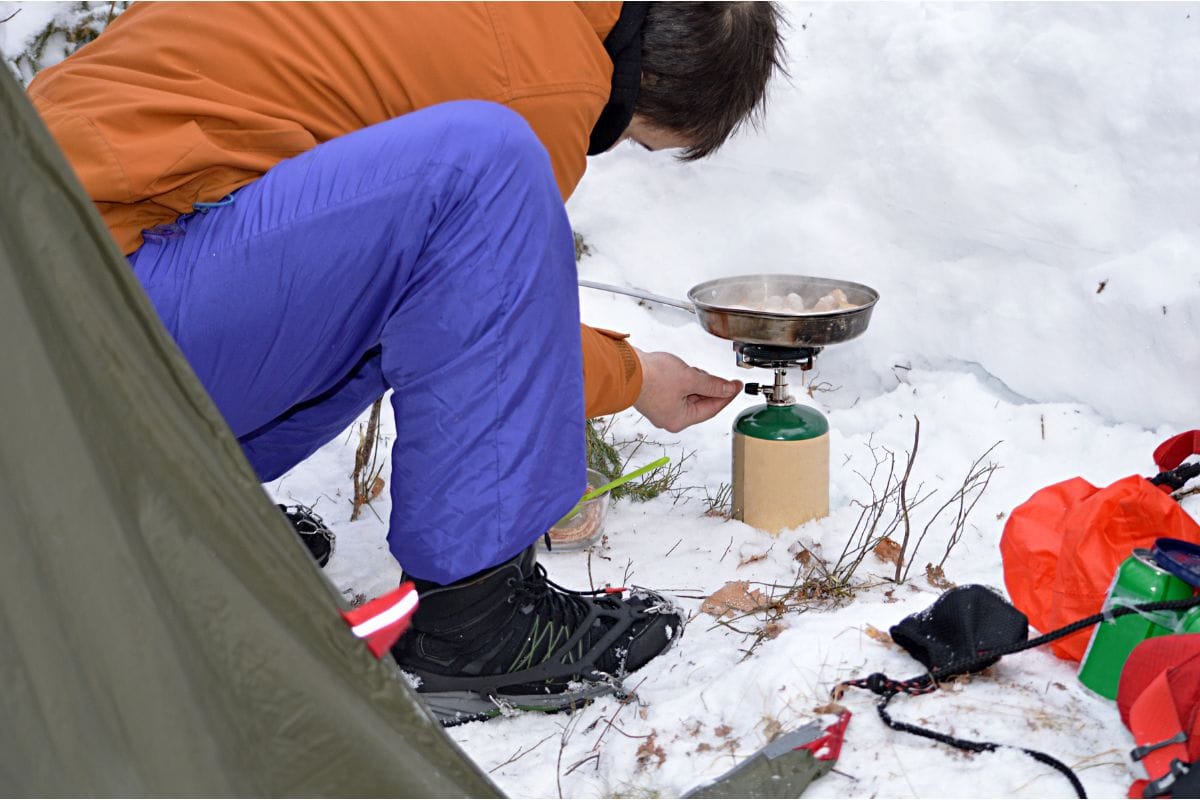
Alright, let's get into the heart of the matter.
You're probably wondering how alcohol stoves stack up against the more familiar canister stoves.
It's like comparing a classic vinyl record to a digital playlist - both have their charm, but they cater to different needs. Let’s break it down.
What Are Canister Stoves?
Imagine a stove that's as easy to use as your home gas burner, but portable. That's a canister stove for you.
These stoves screw onto sealed gas canisters that contain a pre-pressurized mix of propane and butane. When you turn on the stove, the gas is released, and voila, instant flame with adjustable heat.
Types of Fuel for Canister Stoves
- Propane/Butane Mix: Most common, offering a balance of cold-weather performance and weight.
- Isobutane: A bit pricier, but it performs better in colder conditions.
Weight and Packability: The Backpacker's Dilemma
- Canister Stoves: Generally, they're a tad heavier than alcohol stoves. The stove itself might be light, but the canister adds weight. The convenience of a canister stove comes at the cost of pack space.
- Alcohol Stoves: These are the featherweights of the stove world. Homemade versions can weigh mere ounces, and even the most robust models are still incredibly light.
Fuel Efficiency and Availability: Keeping the Flame Alive
- Canister Stoves: They're fuel-efficient beasts. A single canister can last for several meals, depending on your cooking habits. But, here's the catch - finding canister refills in remote areas can be tricky.
- Alcohol Stoves: Alcohol as a fuel isn't as efficient per ounce as canister gas. However, the ease of finding denatured alcohol or even rubbing alcohol at hardware stores or gas stations can be a game-changer.
Situational Performance: Where Do They Shine?
- Canister Stoves in the Wild: They’re great for quick meals and boiling water quickly. If you're planning a trip where time and convenience are key, and you’re sticking to trails with easy resupply points, canister stoves are your friend.
- Alcohol Stoves on the Trail: Perfect for the minimalist or the ultralight backpacker. If your journey is more about the trek than the culinary experience, and you're okay with a bit slower cooking times, alcohol stoves are a winner.
Alcohol Stoves vs. Wood-Burning Stoves
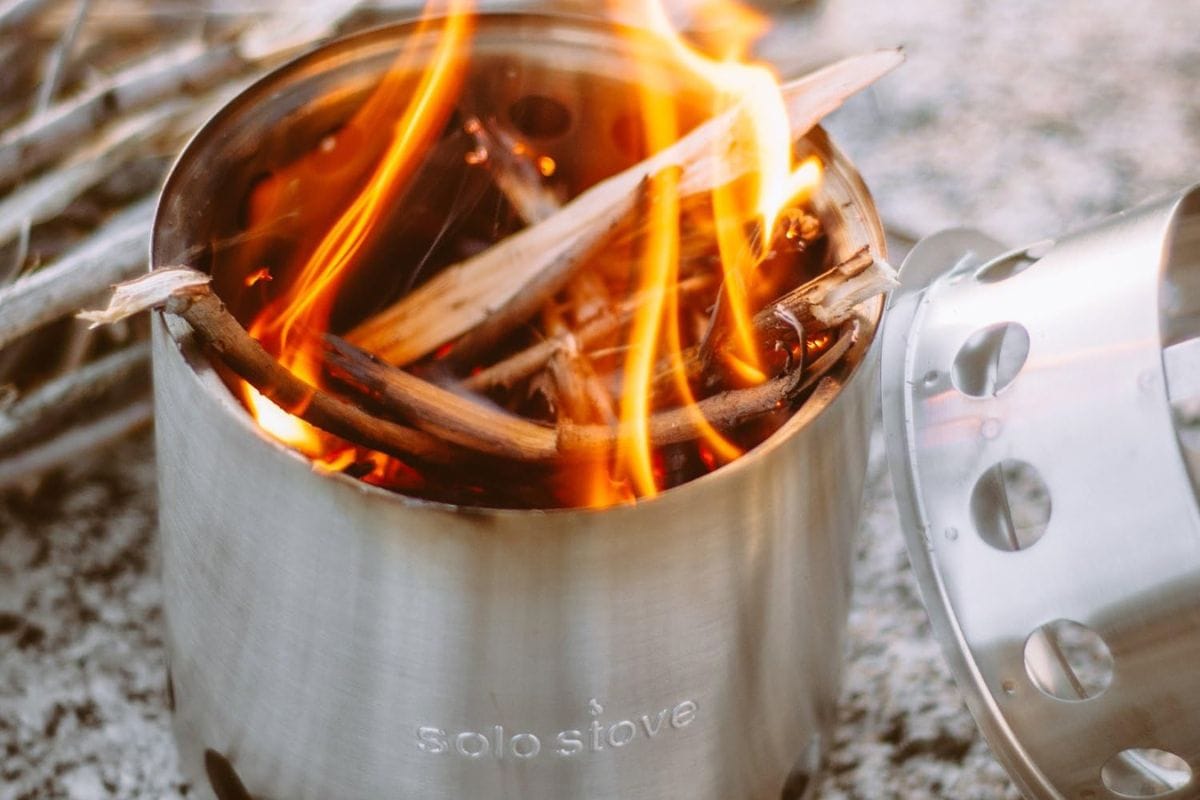
Now, let's shift our focus to another popular contender in the backpacking world - the wood-burning stove.
Picture sitting by a mini campfire, cooking your meal with the twigs and leaves you gathered along your hike. That's the essence of wood-burning stoves.
But how do they stack up against our lightweight champion, the alcohol stove?
The Basics of Wood-Burning Stoves
Imagine a stove that doubles as a mini campfire.
Wood-burning stoves, like the Solo Stove Lite, use twigs, leaves, pinecones - basically anything you can scavenge from the forest floor - as fuel. They’re designed to maximize airflow and combustion, so you get a hot flame with less smoke.
- Solo Stove Lite: A compact, efficient design popular among backpackers.
- DIY Wood Stoves: For the crafty backpackers, making a stove out of a tin can is a fun project.
Weight and Environmental Considerations
- Wood-Burning Stoves: They're generally heavier than alcohol stoves, but you don’t need to carry fuel. Plus, they have a lower environmental impact since you’re using renewable resources.
- Alcohol Stoves: They win in the weight department. But consider the environmental cost of manufacturing and transporting the fuel.
Fuel Availability and Efficiency
- Wood-Burning Stoves: Fuel is everywhere in the woods! But the efficiency can vary greatly depending on the type and wetness of the wood.
- Alcohol Stoves: Fuel isn't as readily available as twigs, but it's consistent. You know exactly how long a certain amount will burn.
Ease of Use and Fuel Storage
- Wood-Burning Stoves: There's a learning curve to starting a fire, especially in wet conditions. Also, remember, no wood, no flame.
- Alcohol Stoves: Easier to light and control. Plus, storing liquid fuel is straightforward, but it does require a leak-proof container.
Key Features of Alcohol Stoves in Backpacking
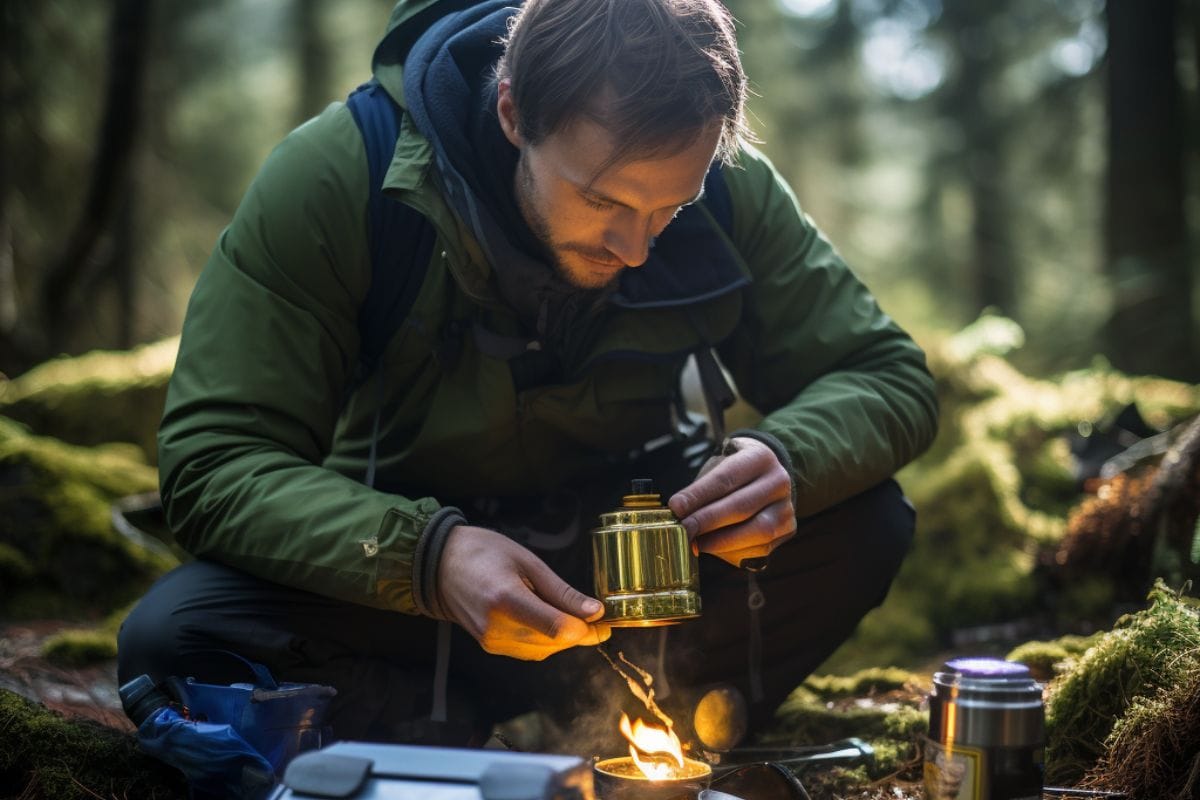
Alright, let’s zoom in on alcohol stoves and break down what makes them such a beloved choice among many backpackers.
From their fuel capacity to the fun DIY aspect, there’s a lot to unpack here.
Fuel Capacity and Efficiency
- Fuel Capacity: This varies depending on your stove design. Some commercial stoves can hold enough fuel for about 12-15 minutes of burn time - just enough to boil a couple of cups of water.
- Boiling Efficiency: On average, it takes about 5-8 minutes to boil a cup of water with an alcohol stove. Remember, this can vary with altitude, wind, and ambient temperature.
Ease of Use and Maintenance
- Lighting Up: Alcohol stoves are straightforward to light – pour in the alcohol, light it, and you’re good to go. No valves, no pumping.
- Maintenance: These stoves are incredibly low-maintenance. There are no moving parts to break or clog, making them a reliable choice for long trips.
- Fuel Storage: Carry your alcohol in a leak-proof bottle. A tip? Mark it clearly to avoid any mix-ups!
Suitability for Different Trip Types
- Solo Backpacking: Alcohol stoves are a dream for solo trekkers. They're light, easy to use, and perfect for one-person meals.
- Group Backpacking: Here, they can be a bit limiting. If you’re cooking for a group, you might find the longer cooking time a bit of a drawback. But hey, more time for campfire stories, right?
The DIY Aspect: Craft Your Own Stove
- The Fun Part: You can make your own alcohol stove using simple materials like soda cans or cat food tins. It's a satisfying project, and there’s a sense of pride in cooking a meal on a stove you made yourself.
- How-To Basics: Cut two soda cans to create a small container and lid. Poke holes for ventilation, fill it with alcohol, and light it up. There are plenty of tutorials online to guide you through the process.
In essence, alcohol stoves are a fantastic option for backpackers who prioritize weight, simplicity, and the joy of DIY.
Whether you’re a solo adventurer or part of a duo, they offer a reliable way to cook your meals and enjoy the wilderness.
Safety and Environmental Considerations

Using an alcohol stove isn't just about cooking up a storm in the great outdoors; it's also about doing it safely and respecting Mother Nature.
Let’s talk about how you can keep things safe and green.
Transporting and Storing Fuel – The Right Way
- Transporting: Use a sturdy, leak-proof bottle for carrying alcohol. Fuel can degrade certain plastics over time, so choose a container designed for alcohol. A pro tip? Metal fuel bottles are a great choice.
- Storing Unused Fuel: Keep it away from heat sources and direct sunlight. And always, always label your fuel bottle to avoid any dangerous mix-ups.
Alcohol Stoves vs. Fossil Fuels: The Green Debate
- Lower Impact: Alcohol stoves generally have a smaller carbon footprint compared to fossil fuel stoves. The fuels they use, like denatured alcohol, are often bio-based.
- Sustainability Factor: Since alcohol can be derived from renewable resources, it’s a more sustainable option. But remember, the manufacturing and transportation of any fuel have an environmental cost.
Fire Bans and Restrictions
- Be Aware: Some regions with high fire risk might have bans that include alcohol stoves. Always check local regulations before you head out.
- Why the Bans? Unlike some canister stoves, alcohol stoves don’t have an on/off switch. This means they can be a bit riskier in dry, fire-prone areas.
Best Practices for Minimizing Risks
- Use a Stable Surface: Always place your stove on a flat, non-flammable surface. A small metal or silicone pad can work wonders.
- Wind Protection: Use a windscreen to prevent the flame from spreading (but ensure there’s enough ventilation to avoid overheating).
- Emergency Extinguishing: Have water or a small fire extinguisher handy, just in case. To extinguish an alcohol stove, deprive it of oxygen by covering it with a pot or a metal surface.
Best Alcohol Stoves for Backpackers
Ready to find your perfect backpacking companion? When it comes to alcohol stoves, there's a plethora of options out there.
To save you some legwork, I’ve rounded up a few top contenders that have earned their stripes in the backpacking community. Let’s check them out.
Popular Models on the Trail
1. White Box Alcohol Stove
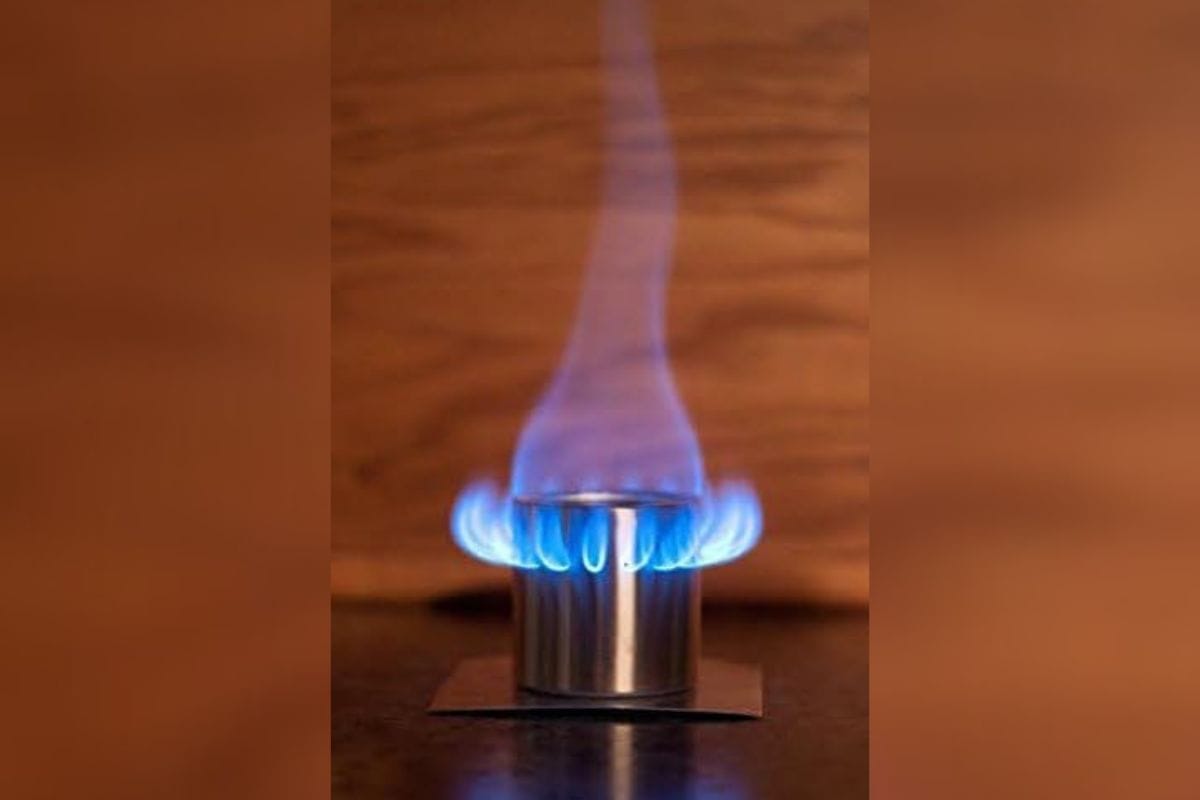
- The Rundown: This one's a favorite among thru-hikers. Made from recycled materials, it's not just eco-friendly but also super efficient.
- Why It's Great: It boils water fast and can burn for about 20 minutes with just one fill. Plus, its robust design means it’s less likely to get dented in your pack.
2. Esbit Alcohol Stove
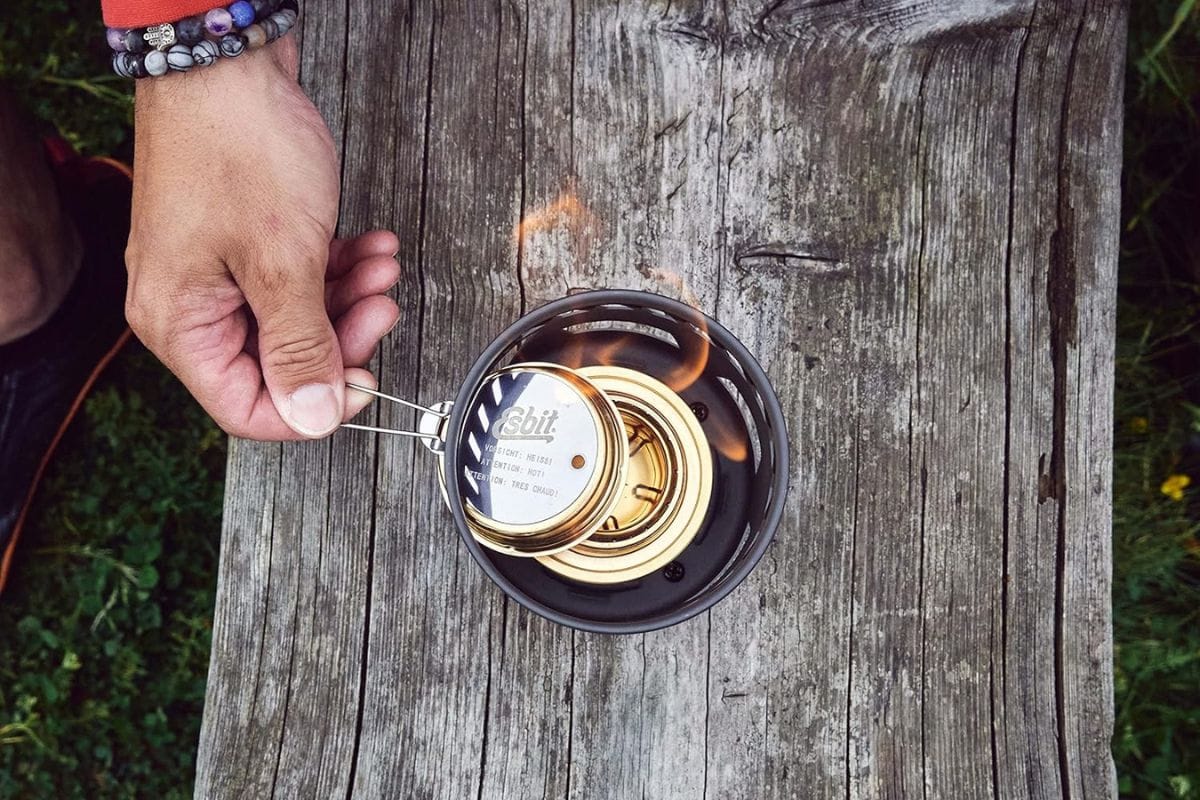
- The Details: A compact and versatile option. It comes with a simmer ring, allowing for better heat control – a boon for the gourmet backpacker.
- Standout Feature: Its flame regulator gives you more control over cooking, perfect for meals that need simmering.
3. Trangia Spirit Burner
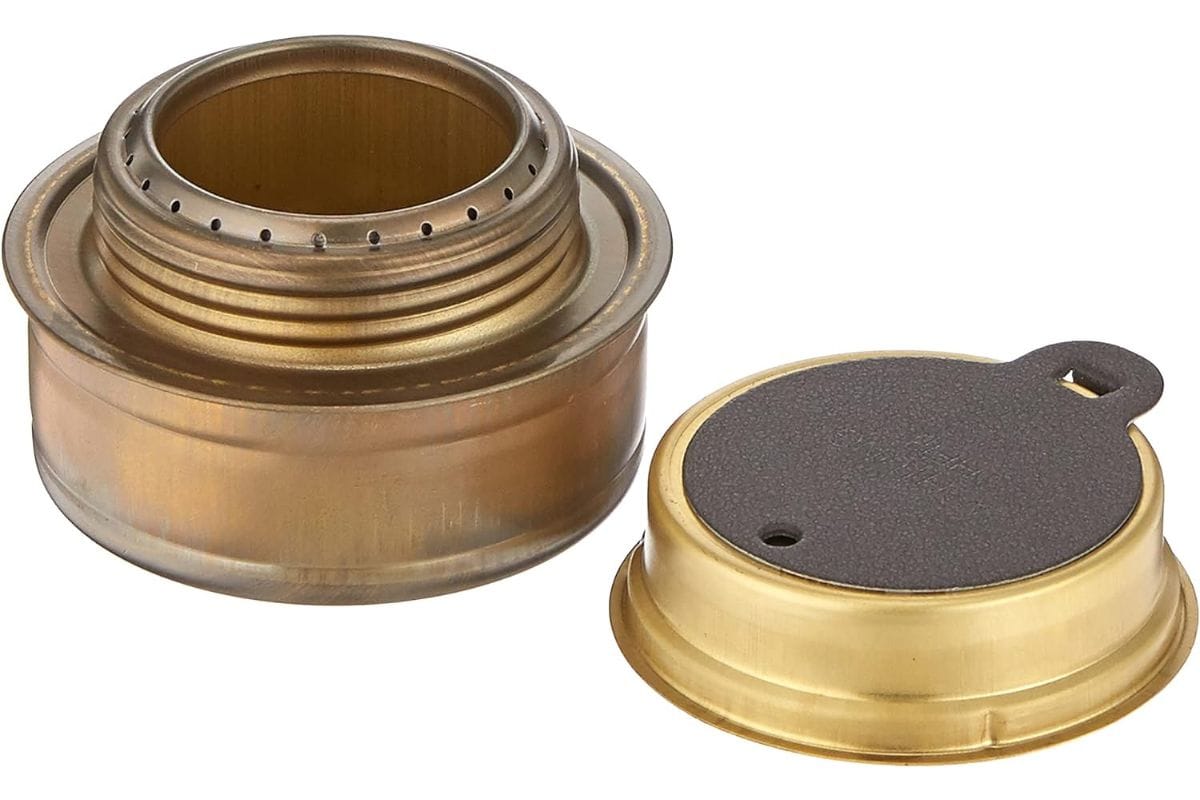
- The Overview: A classic design that’s been around for decades. It’s reliable, easy to use, and pairs well with the Trangia cook system.
- What’s Cool About It: The screw-top lid with a rubber O-ring lets you store unused fuel right in the burner, reducing waste.
4. Solo Stove Alcohol Burner
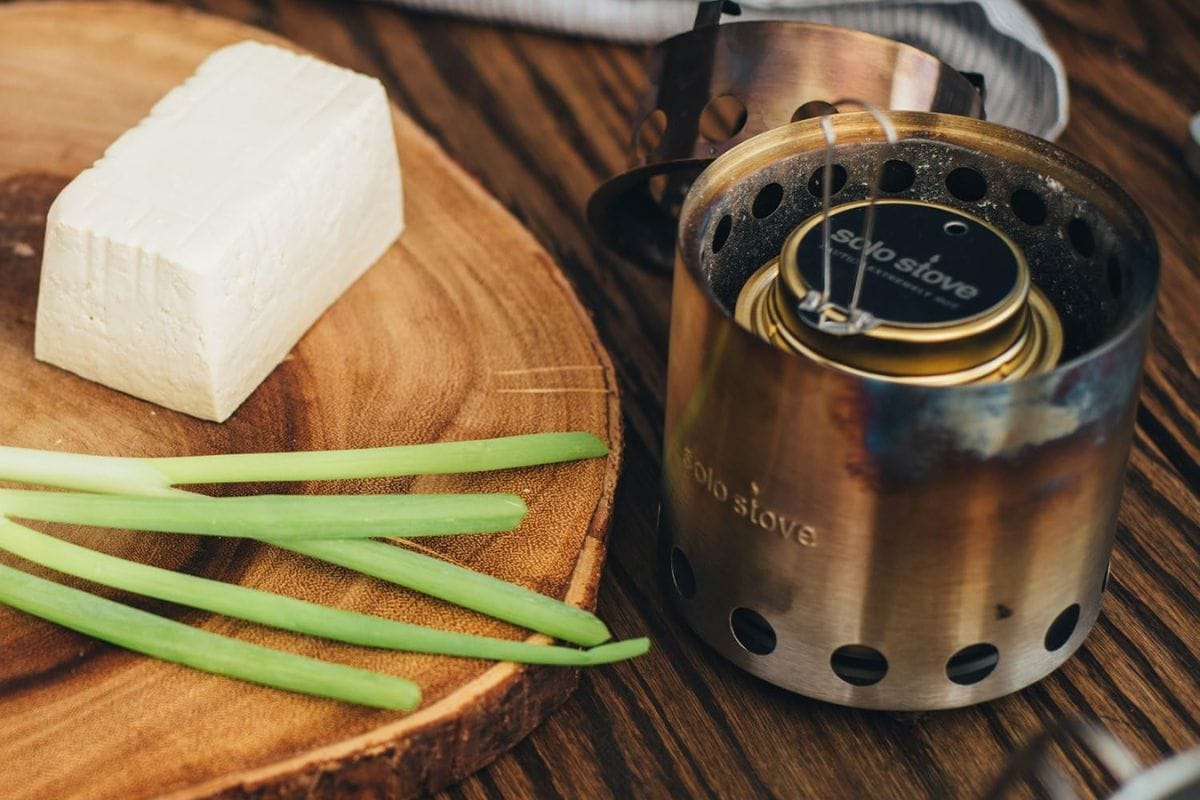
- Quick Description: Compact and efficient spirit burner designed for slower, longer-term cooking, such as making stews or boiling vegetables, and it serves as a great backup fuel source and companion to the wood-burning Solo Stove.
- What Makes it Unique: Compatibility with the Solo Stove's efficient airflow system, which allows for faster boil times and its ability to store fuel directly in the burner for extended periods without leakage, making it a convenient and reliable outdoor cooking companion.
- Best Feature: Best used with the Solo Stove Lite Wood Burning Stove. It's convenient to have a stove capable of utilizing two different types of fuel sources.
Factors to Consider
When choosing your stove, keep these points in mind:
- Fuel Capacity: More capacity means longer burn times but also more weight. Balance is key.
- Weight: Are you an ultralight fanatic or is a few extra ounces no big deal? Remember, every ounce counts on the trail.
- Pot Support: Make sure your stove can stably hold your cookware. Nobody wants a dinner disaster!
From the Horse's Mouth: Tips from Seasoned Backpackers
- Efficiency Hack: “Preheat your stove on cold mornings by placing it in your pocket for a few minutes. It helps with the initial lighting.” – Sarah, PCT Hiker
- Windscreen Wisdom: “A DIY aluminum foil windscreen is a game-changer. It saves fuel and speeds up boil time.” – Mike, Appalachian Trail Enthusiast
- Fuel Gauge Tip: “Mark your fuel bottle with graduated lines to know exactly how much you’re carrying.” – Emily, Weekend Warrior
Accessories and Add-Ons for Alcohol Stoves
So you've picked your alcohol stove - awesome! But wait, there's more.
To elevate your cooking game in the wild, let's talk about some nifty accessories and add-ons. These little extras can make a big difference in your backpacking kitchen efficiency.
Essential Accessories
1. Pot Stand
- Why You Need It: Keeps your pot stable and at the right height for optimal heating.
- Pro Tip: Look for a lightweight, collapsible stand for easy packing.
2. Simmer Ring
- The Rundown: This helps you control the flame, giving you more cooking versatility.
- Backpacker's Advice: “It’s perfect for when you need to simmer soup or cook rice. It prevents burning and saves fuel.”
3. Fuel Bottle
- Essential? Absolutely: A leak-proof, durable bottle is a must for carrying your alcohol fuel.
- Safety First: “Always store your fuel in a bottle that's distinctly different from your water bottle to avoid mix-ups.”
Optional Add-Ons for an Enhanced Experience
1. Windscreen
- Why It Matters: It protects your flame from the wind, increasing efficiency and reducing boil time.
- DIY Hack: You can make one from a piece of aluminum foil. Cheap, light, and effective!
2. Pot Supports
- The Role: They ensure your pot doesn’t smother the flame and allows for adequate air circulation.
- Seasoned Backpacker's Insight: “Adjustable supports are great for accommodating different pot sizes.”
DIY Tips for Customizing Your Alcohol Stove System
- Multi-Use Items: Consider using your windscreen as a heat reflector or a base to protect the ground.
- Custom Stands: DIY enthusiasts can create lightweight pot stands from wire hangers or mesh.
Frequently Asked Questions
Are alcohol stoves good for backpacking?
Yes, alcohol stoves are good for backpacking because they are lightweight and easy to use.
What are the disadvantages of alcohol stove?
The downsides of alcohol stoves are that they cook food slowly and can be hard to use in windy weather.
Are alcohol stoves any good?
Yes, alcohol stoves are good, especially for backpackers who want something light and simple.
Why Do Backpackers Like Alcohol Stoves?
Backpackers like alcohol stoves because they are light to carry and easy to operate.
Bottom Line
Alcohol stoves are a bit like the vinyl records of the backpacking world – they have a charm that’s hard to beat. They’re lightweight, simple, and can be a DIY enthusiast’s dream.
However, they do require a bit more patience and finesse compared to other stove types.
- Pros: Lightweight, simple, environmentally friendly, inexpensive fuel, and great for the DIYer.
- Cons: Slower cooking times, slower than canister stoves to boil water, less fuel-efficient, and not ideal for large groups or gusty conditions.
Remember, the best backpacking stove is the one that fits your adventure style and needs.
Are you a solo trekker who relishes the journey more than the culinary experience?
Or are you a gourmet backpacker who enjoys elaborate meals under the stars?
Your answer to these questions will guide your choice.
I encourage you to experiment with different stove types. Each has its unique character and benefits.
Who knows? You might find joy in the simplicity of an alcohol stove or the convenience of a canister stove. The trails are waiting, and so is your next great meal!
Happy trails and happy cooking, fellow backpackers!
Before You Go...
